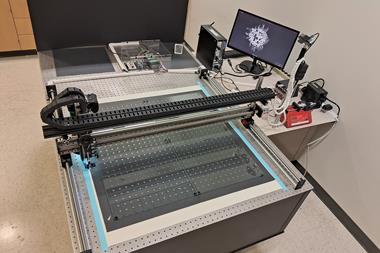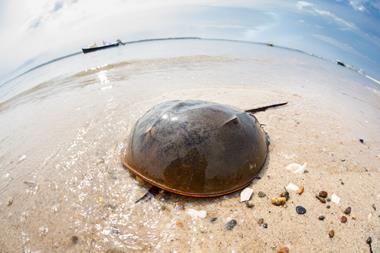A device that can electrochemically determine whether tropical ornamental fish have been caught using an illegal fishing method has been developed by US researchers. The work was presented at the American Chemical Society’s Spring 2017 meeting in San Francisco.
During cyanide fishing, sodium and potassium cyanides released into seawater to temporarily stun the fish so they are easier to catch. It is estimated that between 20 million and 30 million such fish are traded globally, with the US importing at least half of those. The practice causes significant environmental damage, such as bleaching coral reefs.
‘The process releases a lot of cyanide that is then in the ocean where it can spread easily, and there are other organisms … [that] end up taking a lethal dose,’ explains Clifford Murphy, a chemistry professor at Rogers Williams University who led the research.
Cyanide fishing is a particular problem in the reefs off of the Philippines, Indonesia and Vietnam. Although it was outlawed decades ago by nations where aquarium fish are collected, it remains extremely hard to catch and prosecute offenders. Forensic determination of whether fish were captured using this illegal method often involves killing the fish to test their organs for cyanide poisoning.
Murphy and his team have developed a sensor that can indicate whether the water in the tank with newly caught ornamental fish contains thiocyanate, which is a primary metabolite of cyanide. Inspired by work on dye-sensitised solar cells, the group created electrodes by attaching metalloporphyrins to a substrate, and exposed the resulting sensor to water collected from Narragansett Bay on the north side of Rhode Island.
The sensor can detect thiocyanate at a level of 1 to 2 parts per billion (PPB) – an improvement on existing methods that only detect thiocyanate in seawater at 3.2 PPB.
‘We have been able to correctly identify blindly whether the fish were exposed to cyanide or were control fish that had not been exposed,’ Murphy says. Regarding the potential for false positives, he notes that there are very few naturally occurring cyanide exposures in oceans. ‘With the levels that we are detecting…it would be very hard for it to come from somewhere other than cyanide fishing.’
Murphy’s team has encountered some engineering problems with their device, related to reproduction and consistency with electrodes. But he estimates if they can resolve these issues than it might reach the market in one or two years. The materials used to build the device, including titanium dioxides, are not expensive, and neither are the chemical processes involved. However, the electrodes are quite sensitive to thiocyanate and therefore can only be used once, which does imply some cost.

News from the American Chemical Society meeting in San Francisco

News stories from the 253rd National Meeting & Exposition of the American Chemical Society
- 1
 Currently
reading
Currently
reading
Sensing illegal cyanide fishing
- 3
- 4
- 5




































No comments yet